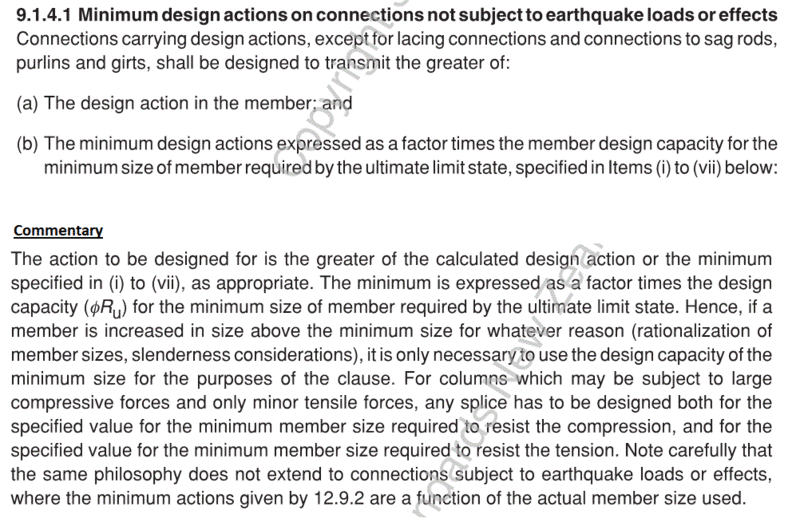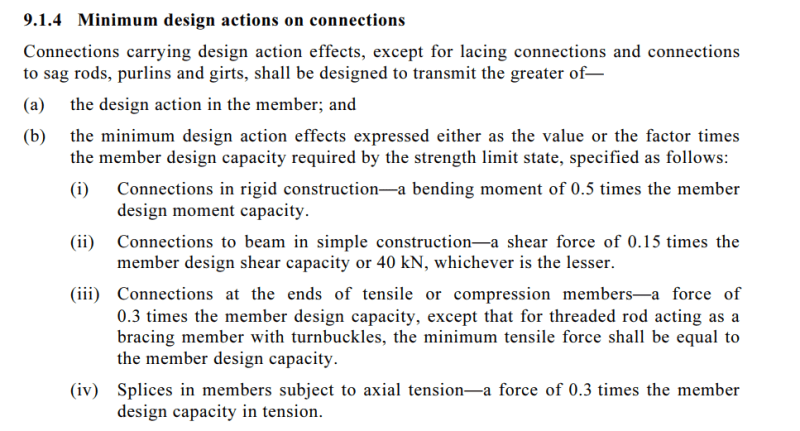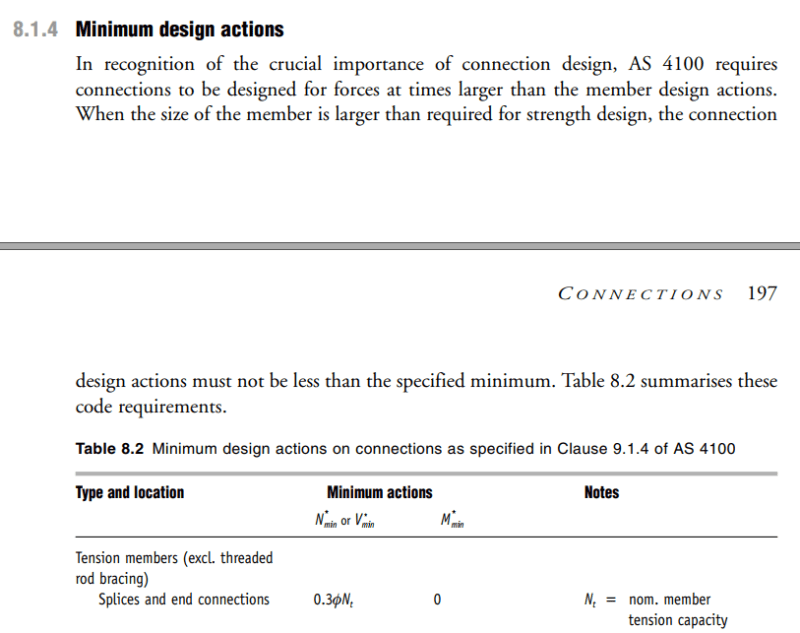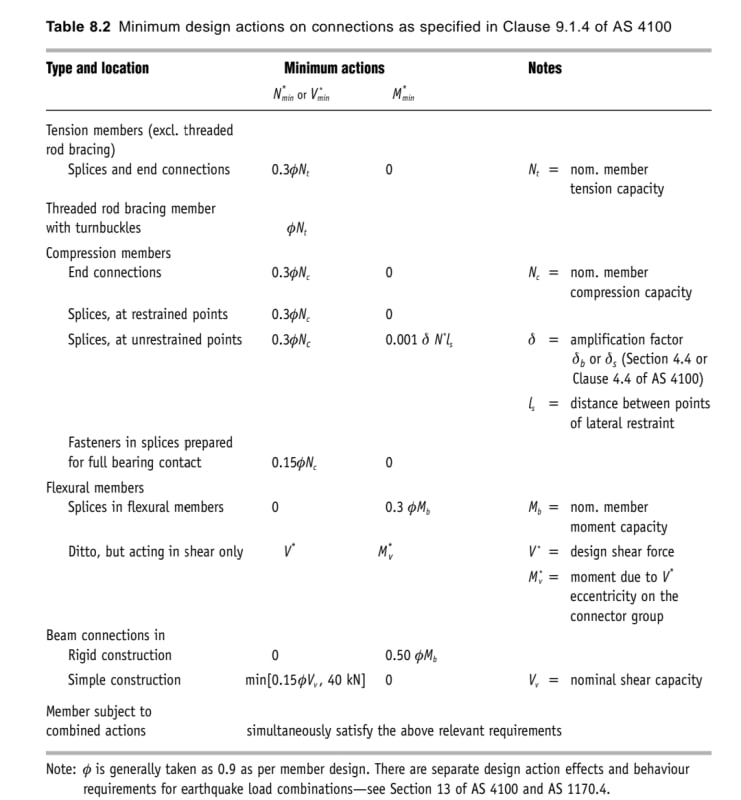kauri
Structural
- Aug 13, 2018
- 36
Hi, from my code NZS3404 for steel design, there is the requirement for minimum design actions acting on steel connections: "Connections at the end of tension or compression members - a force of 0.3 times the member design capacity". I'm looking at designing some epoxy bolts for small columns which primarily take gravity loads, but under uplift may experience tension. So this requirement to design the columns for 30% member tension capacity will kill my design.
Eg, I have 125SHS column sized for gravity loads and EQ lateral deflections, epoxy bolted to concrete. Under uplift it takes 20kN tension; under 30% member tensile capacity I need to size it for 400kN tension. How the f**k do I design my epoxy bolts for 400kN tension?? xD I must be missing something here.
Eg, I have 125SHS column sized for gravity loads and EQ lateral deflections, epoxy bolted to concrete. Under uplift it takes 20kN tension; under 30% member tensile capacity I need to size it for 400kN tension. How the f**k do I design my epoxy bolts for 400kN tension?? xD I must be missing something here.





![[ponder] [ponder] [ponder]](/data/assets/smilies/ponder.gif) ....
.... ![[banghead] [banghead] [banghead]](/data/assets/smilies/banghead.gif)




